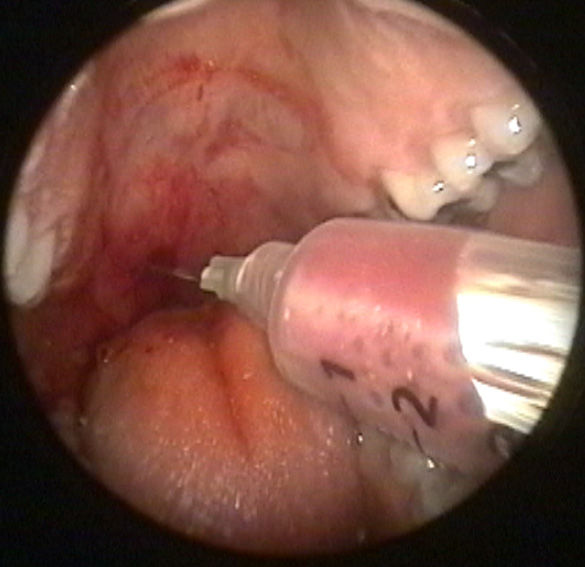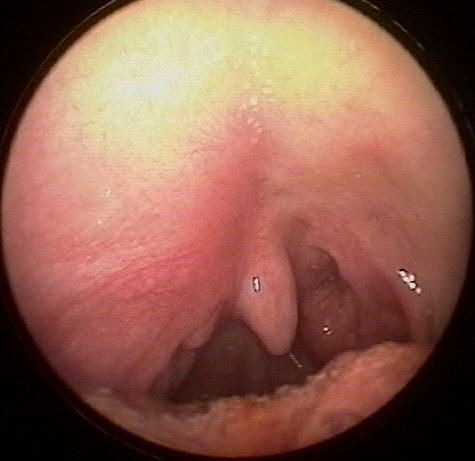Aaron Trinidade, FRCS (ORL-HNS)
ENT Surgeon
Providing exceptional care for your ears, nose & throat

Helen Frankel: 07968312069
Private Secretary
Quinsy (peritonsillar abscess)
What is a quinsy?
Quinsy is the name given for a collection of pus around one of the tonsils. It is also known as a peritonsillar abscess.
What causes a quinsy?
Quinsy usually occurs as a direct consequence of tonsillitis, where bacteria from one of the infected tonsils travel to the space around the affected tonsil and form an abscess. It usually occurs in young adults in their 20s to 40s and is uncommon in children and older adults.
Quinsy usually affects only one tonsil at a time, even if both tonsils are infected from tonsillitis at the same time. Having a quinsy around both tonsils at the same time is rare, although either tonsil can be affected during an attack of tonsillitis.
What are the symptoms?
A very sore throat is the main symptom and patients complain of a general feeling of being very run down (called malaise). The quinsy causes severe swelling of the surrounding tissues and obstruction of the back of the throat. This obstruction makes it difficult to swallow, including one’s own saliva, resulting in drooling. It also causes a change in the quality of one’s voice, known as a “hot potato voice” as the patient is said to sound like they are trying to talk with some hot potato in their mouth. The quinsy also causes inflammation of the muscles that open the mouth, thus making this difficult to do (called trismus). In cases of severe swelling of the tissues at the back of the throat, breathing can sometimes be affected and become difficult. This is dangerous and is treated as an emergency.
How is a quinsy diagnosed?
Quinsy is readily diagnosed based on the symptoms and examination of the mouth, which can be difficult to do due to the trismus. Occasionally a CT scan of the throat is performed if the diagnosis is not clear.
How is it treated?
The treatment of quinsy always involves drainage of the abscess around the tonsil. This is almost always performed under a local anaesthetic, since a general anaesthetic can be dangerous in the presence of a quinsy due to the swelling at the back of the throat, which can cause difficulty in getting a breathing tube into the lungs.
Local anaesthetic spray is applied to the quinsy to numb it before drainage of the quinsy is attempted. Because of the very inflamed tissues, even with the spray, drainage can still be uncomfortable and patients with a strong gag reflex may gag during the procedure. The tongue is then depressed and a scalpel or needle is then placed into the mouth and used through the mouth to release pus from the quinsy. This results in an immediate relief as the pressure of the pus is released into the mouth. The pus is then spit out into a bowl. Suction is then used to ensure that all of the pus has been evacuated.
Most patients will require 1 to 2 nights’ stay in the hospital for intravenous antibiotics, fluids and pain relief. If the quinsy results in difficulty in breathing, a short course of steroids is sometimes administered to reduce the swelling at the back of the throat.
Does having a quinsy put me at risk of developing another one in the future?
Having a quinsy does slightly increase the risk of developing one in the future. However, most people will only have one episode.
Is a tonsillectomy ever indicated for a quinsy?
During an active quinsy, the pus is usually readily drained from around the tonsil without a need to remove the tonsil itself. Thus tonsillectomy is not usually performed except in rare instances when removal of the tonsil is seen as additionally beneficial. This is known as a hot tonsillectomy and has a higher risk of complications that normal tonsillectomy.
Tonsillectomy is considered in people who have suffered from 2 or more episodes of quinsy. The tonsillectomy is performed as an elective procedure only after the quinsy has been treated and the patient has made a full recovery (usually 6 or more weeks). Even though quinsy often affects only one tonsil, both tonsils are removed during tonsillectomy as either may be at risk of developing quinsy in the future.
Further information
For more information on tonsillitis, click here.
For more information on tonsillectomy, click here.


On the left side of the picture (the patient's right side), a quinsy can be seen as a swelling around the tonil below. The quinsy can also be seen pushing the uvula (the dangling structure in the middle) to the opposite side. This is typical of a quinsy.
Here a needle is used to drain pus from the quinsy pictured above. This is peformed under a local anaesthetic with the patient awake.

